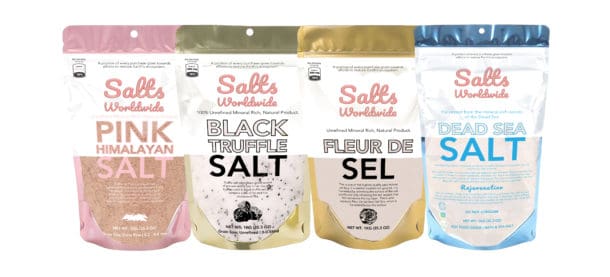While commercially harvested fleur de sel is widely grown, it’s also naturally occurring mineral sea salt found under certain weather conditions. Essentially, fleur de sel is obtained from evaporated seawater in a special manner. Fleur de Sel isn’t quite as common as fleur de lis, but for some it’s just as much a matter of taste and desire. Here’s why you should consider using fleur de sel salt in your next cooking adventure:
Fleur de Sel isn’t just one of the best fleur de sel salts on the market. It’s also one of the least expensive. Large deposits of seawater are heated and then filtered to remove rocks and debris. The resulting salt is highly refined and its crystals are rounded and irregular in shape. Because of this, fleur de sel can be likened to tiny fine sand – one of the most beautiful yet most inexpensive finishing salts available.
Because fleur de sel has such a low moisture content (2.7 percent) it works exceptionally well as a backrow or bottom sassy flavor in sauces and gravies, where a little bit of salty taste is necessary. You won’t find it overpowering and the flavor will remain subtle for a longer period of time. In fact, in the French it’s often used as a simple salt, not unlike table salt, and is used to add texture, body and moisture content to dishes.
The fleur de sel crystals create a soft and subtle texture that works particularly well in egg dishes and white sauces where a buttery or salty finish is desired. It doesn’t have the intensity of other table salt, and its flavor is more delicate than most sea salts. However, it does have a very intense and distinctive flavor. A slight salty flavor can blend beautifully with delicate items like cheeses, fruit sauces, pastas and white sauces.
Because this sea salt has such a small amount of sodium content, you shouldn’t consume a large amount daily or feel thirsty after eating it. Like other naturally occurring salts, its concentration level is too low to cause any health issues. As long as you follow your salt intake recommendations and use it in moderation, you shouldn’t have any negative effects. One thing to keep in mind though – this is a delicate seasoning. Its delicate flavor may make it difficult to use in certain cooking styles.
Fleur de Lis also goes by the name of rande de Boeuf, which means “dagger of the sea”. The name comes from a tale in which a merchant accidentally killed his brother using a piece of the rande. He then buried the body along with a handful of fleur de sel crystals along with his brother’s head. Since the crystals heal injuries and protect the body from corrosion, the merchant used the crystal as a finishing salt for his food.
Fleur de Sel works best when its not stored in an open air environment. If it’s kept in a container, it will lose its delicate flavor. So, you’re better off using it fresh from the sea or bought in its most natural form, which is usually harvested from the Brittany River. There are many Brittany River vendors who sell fleur de sel directly from the water. But, if you don’t mind paying more, there are also stores who sell dried sea salts harvested from the Brittany River, which has a much deeper and richer flavor.
Fleur de sel has great usage in French cooking as well as baking and other culinary dishes. You can use fleur de sel in soups, stews and chili. If you buy it fresh from the river, the flavor will be fresher and more intense. You can even sprinkle with fleur de sel in your baked breads and desserts to have a fleur de sel effect on your baked goods.


Recent Comments